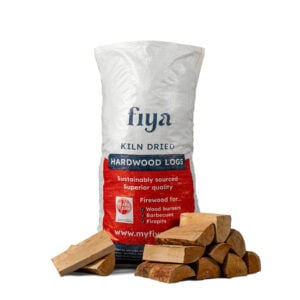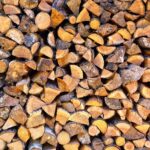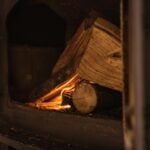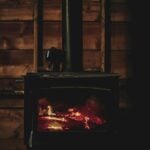Your basket is currently empty!
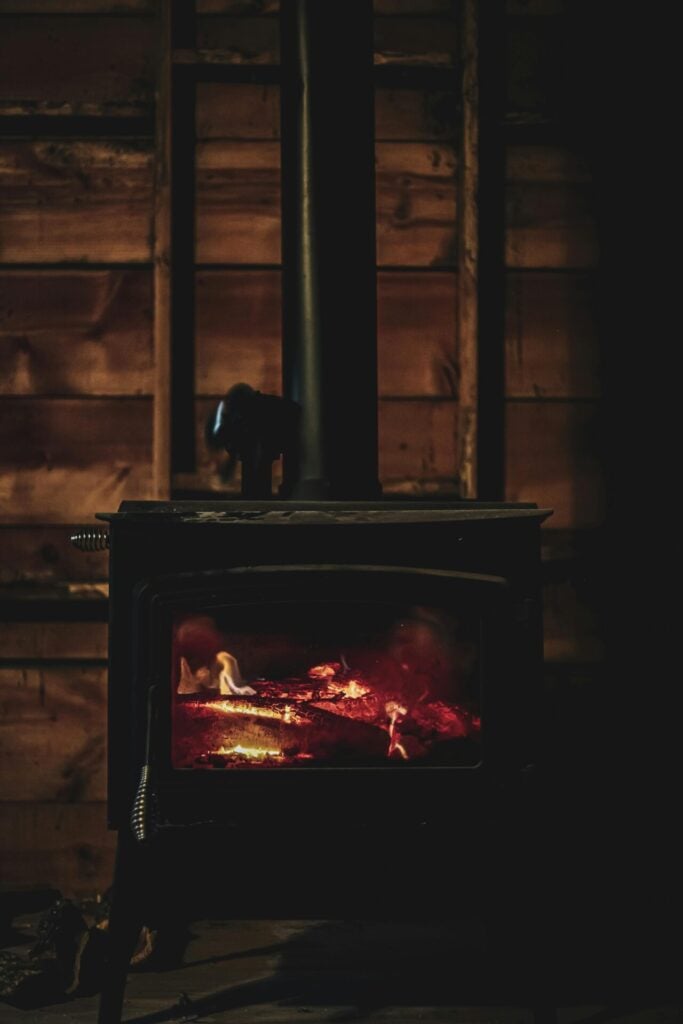
Best Way To Light a Wood-Burning Stove
Getting the perfect fire going is a simple and satisfying ritual. This guide offers a reliable method for an easy and efficient burn every time, leaving you with nothing to do but relax and enjoy the glow.
Contents
What You’ll Need
Being prepared is the key to a stress-free start. We would recommend that you have these four essentials on hand before you begin.
- Fiya Logs: A few logs, perfectly seasoned for a clean burn.
- Kindling: A handful of small, dry sticks to help the fire catch.
- A Firelighter: One natural firelighter is all you need to get things started.
- Matches or a Lighter.
Helpful Tip: Always use dry, kiln-dried kindling. It will catch the flame much faster than salvaged twigs and produce less smoke, which helps to keep your stove and chimney cleaner.
Choosing the Right Wood for the Right Warmth
The secret to a truly great fire lies in the wood you choose. Different woods burn in distinct ways, and understanding this difference is crucial for creating the perfect atmosphere.
At its simplest, firewood is either hardwood or softwood. Softwoods, such as birch, are less dense, meaning they burn quickly and brightly. Hardwoods, like oak, are denser. They take a little longer to catch but burn much more slowly and steadily once they’re going.
For the perfect fire, we recommend a mix of both:
- Birch is for the beginning. Its papery bark helps it catch light with ease, producing a brilliant, welcoming flame that quickly fills your stove with life. It’s perfect for creating that instant, satisfying blaze.
- Oak is for the evening. Once your fire is established, adding oak logs is the key to a long-lasting, efficient burn. It provides a consistent, radiating heat and eventually burns down into an excellent, glowing bed of embers.
By starting with birch and then adding oak, you get the best of both worlds: a fire that’s easy to start and lasts for hours.
Helpful Tip: The most important factor for any firewood is its moisture content. Always choose properly seasoned or kiln-dried logs with a moisture content of 20% or less. Wet wood is inefficient, creates a lot of smoke, and is harmful to your stove and chimney.
Five Steps to Building & Lighting a Fire
This “top-down” method is favoured by stove experts because it’s clean, efficient, and wonderfully simple.
- Give it Some Air
A new fire needs plenty of oxygen. Find the air vents on your stove (usually small sliders or dials) and make sure they are fully open.
- Build Your Foundation
Start by placing your two largest Fiya logs parallel to each other on the stove floor. Add a second layer of two smaller logs, placed crossways on top. Now, build a small tower with a handful of kindling on top of the logs. Finally, place your firelighter right on top of the kindling pile.
- Light the Fire
Carefully light the firelighter and close the stove door until it latches.
- Let it Catch
For the next 5 to 10 minutes, simply watch as the fire establishes itself. The flames will spread from the firelighter down through the kindling and begin to ignite the logs below.
- Settle In and Adjust
Once the main logs are burning well with lively flames, you can begin to control the burn rate. Gently move the air vent controls to about halfway closed. This will give you steady, dancing flames for a long, efficient burn.
Helpful Tip: Resisting the urge to poke the fire in its early stages is key. The initial structure allows air to circulate perfectly, so it’s best to let it catch on its own.
Keeping the Glow
To keep the warmth going, you’ll want to add fuel at just the right moment. When your first logs have burned down to a bed of bright, glowing embers, it’s time to add another.
Simply open the air vents again (they don’t need to be fully open), use stove tongs to place a new Fiya log on top of the embers, and close the door. Once the new log is burning nicely, you can adjust the vents back down to your preferred setting.
Helpful Tip: Add a new log while the embers are still red and hot. If you wait too long, the fire may struggle to re-establish, and you’ll create more smoke.
The Final Step
And that’s it. You’ve created the warmth. Now the only thing left to do is settle in and share it. Just remember always to ensure the stove door is securely closed during operation. It’s the simplest way to keep your home safe and your fire burning at maximum efficiency.


